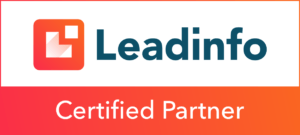How do you get higher in Google?
Want to know how to get your website to rank higher in Google? The secret lies in understanding the complex world of search engine optimisation. By using strategic keywords, creating engaging content and building backlinks, you can increase your online visibility. But getting higher in Google is no easy task - it requires dedication, consistency and knowledge of the latest algorithm updates. Discover useful tips and examples to get your website to the top of the search results in this article.

Understanding the importance of SEO
Basics of on-page SEO
Identifying important keywords for your website is the basis for good findability online. By using relevant search terms, you increase the chances of your website being rank higher in Google.
Optimising meta tags such as title tags and meta descriptions improves your website's visibility in search results. These are the first things a user sees when they search for information.
A good internal link structure on your website helps search engines better understand and index the content. This makes it easier for potential visitors to find relevant information.
Off-page SEO explained
Working on getting quality backlinks to your website is indispensable for a strong SEO strategy. Backlinks act as recommendations from other websites, making search engines rate the value of your site higher.
By also using social media channels you can not only increase your online presence, but also drive more traffic to your website. Sharing valuable content can lead to more engagement and interaction with your target audience. Sharing helps!
Monitoring and responding to online reviews and mentions of your brand is important for reputation management. Positive reviews and mentions can increase trust in your brand, while negative feedback needs to be addressed to limit damage.
Consider "guest blogging" as a strategy to boost your off-page SEO. By writing articles for other websites in your niche, you can not only demonstrate your expertise, but also gain valuable backlinks to your own site. Guest blogging helps reach a wider audience and build relationships with other professionals in your industry.
Step 1: Keyword research
Choosing the right keywords
A thorough keyword research is the start to identify relevant keywords for your website. Make use of tools such as the Google Keyword Planner to analyse the search volume and competition of different keywords. By studying this data, you can select the most effective keywords for your content. Focus especially on long tail keywords, because they are more specific and have less competition.
Other SEO tools you could use are SEMrush or AHrefs.
Find related keywords
To make your content even more relevant, it is important to also related keywords implement. Use various keyword research tools to discover these terms. By incorporating related keywords in your content, you increase the chances of your website being found by users searching for related topics. Make sure you understand the search intent behind these related keywords so you can create effective and valuable content.
To perform this task well, you again use SEO tools or a useful website such as Answer the public.
Using long tail keywords
When optimising your website, focus mainly on long tail keywords, as these often lead to more specific and engaged visitors. By creating content that matches users' specific needs and queries, you increase your chances of ranking higher in search results. Make sure your pages are optimised for these long tail keywords so that you not only attract more traffic to your site, but also increase the chances of conversions.
What are long tail keywords?
Long tail keywords are specific search terms that consist of multiple words and often have less competition than general search terms. These keywords target a specific niche or audience, allowing them to attract targeted traffic to a website. By using long tail keywords, companies can increase their online visibility and attract potential customers looking for specific information or products. It is important to use these keywords strategically in SEO and content marketing to reach the right audience and increase the chances of conversions.
Step 2: Analyse search intent
Understanding SERP
Analyse the search results page to understand the competition. See what type of content performs well and adjust your strategy accordingly. Identify opportunities to improve your content and rank higher.
Take the time to study the SERP thoroughly.
Pay attention to which websites are at the top and what kind of content they offer.
Look at the keywords used and how they are implemented in the titles and meta descriptions.
Make sure you understand what users expect when they enter a specific keyword. By understanding search intent, you can better address their needs and expectations. This will not only help increase your ranking, but also the relevance of your content.
An in-depth analysis of the SERP can also reveal what kind of results Google considers relevant for a particular search term. This insight allows you to adjust your own content strategy and focus on creating valuable and relevant content that matches users' intentions.
By regularly reviewing the SERP, you can identify trends and anticipate changes in the search landscape. This allows you to proactively make adjustments to your SEO strategy and stay ahead of competition. Stay alert to new opportunities and optimisation possibilities to continuously improve your position in Google.
What is SERP?
SERP stands for Search Engine Results Page, which means search engine results page in Dutch. It is the page you see after entering a query in a search engine such as Google. This page displays the organic search results and any paid advertisements. The goal of SEO (Search Engine Optimization) is to rank as high as possible in the SERP so that your website is more visible to potential visitors. It is therefore important to optimise the content of your website to achieve a good position in the SERP.
Step 3: Content creation
Developing unique content
Create original and valuable content that matches search intent. It is essential to produce unique content that is relevant to users' search queries. By providing unique and valuable information, you increase your chances of ranking higher in search results.
Make sure your content offers answers to specific questions people have.
Use keywords naturally in your text to increase relevance for search engines.
Use different types of content, such as blog posts, videos or infographics, to appeal to various audiences.
Ensure a good balance between text, images and multimedia. A balanced mix of text, images and multimedia is crucial for attracting and retaining visitors to your website. Images and videos can help convey complex information in a visually appealing way.
Include relevant images that support and clarify the text.
Use videos to show step-by-step instructions or product demonstrations.
Make sure all media elements are optimised for speed and compatibility with different devices.
Optimise your content for both search engines and users. It is important to focus your content not only on satisfying search engine algorithms, but also on providing value to your audience. A good user experience can lead to more engagement and repeat visitors.
Use clear headings and sub-headings to improve readability.
Take into account meta-tags, alt-texts and internal links for better indexing by search engines.
Regularly test the performance of your content and adjust it based on feedback and analytics.
Step 4: Website optimisation
Mobile first strategy
A important step in optimising your website is making sure it works well on mobile devices. Test the user experience on mobile and adjust where necessary. Focus on fast loading times and responsive design to satisfy mobile visitors.
Ensuring website security
To provide a secure online environment, it is important to implement an SSL certificate. This guarantees a secure connection for users. It is also important to perform regular updates to protect your website from malware and hacks. Improve overall security to increase both user and search engine trust.
Adjusting meta tags
An often forgotten part of website optimisation is, adjusting meta tags. Optimise title tags and meta descriptions for each page to increase findability. Use relevant keywords and compelling copy to increase Click-Through Rate (CTR). Make sure the length of your meta tags stays within recommended limits for optimal display.
Meta tags what are these?
Meta tags are pieces of code placed in the HTML of a web page to give search engines and other online tools information about the content of the page. They contain metadata such as the page title, description, keywords and other relevant information. Meta tags play an important role in search engine optimisation (SEO) because they help search engines understand what a page is about and how it should be displayed in search results. Using meta tags correctly can improve a website's visibility and findability.
Improve link structure
A good link structure contributes to the user-friendliness and findability of your website. Create a clear internal link structure that is logically structured. Use anchor texts that are relevant to the target page, this helps search engines better understand what the page is about. Optimise the link structure with both users and search engines in mind.
What are anchor texts?
Anchor texts are the clickable words or phrases in a hyperlink. They are used to describe the content of the linked page or to encourage the user to click through. It is important to use relevant and clear anchor texts as they not only improve the user experience, but also help with search engine optimisation. By strategically using anchor texts, websites can be found better and users can navigate through the content more easily.
Step 5. Further SEO optimisation
External links and impact
External links of trusted websites are important for a good SEO strategy. Make sure you obtain quality external links to make your website rank higher. Monitor regularly the impact of these external links on your SEO performance to see which links are most effective. By sharing valuable content, you build a natural link profile on that search engines value.
Advantages:
Increased authority and credibility
Improved visibility in search results
Disadvantages:
Risk of harmful or spammy links if you try to do this yourself without experience
Time and effort required to obtain quality links
Improve pagespeed
To improve the pagespeed of your website, it is essential to optimise images and CSS files. This reduces file size and ensures faster load times. Make use of caching and compression techniques to further increase pagespeed. Regular pagespeed testing is important to identify and address any bottlenecks for an optimal user experience.
Optimise images by:
Compress without loss of quality
Using appropriate file formats such as JPEG or PNG
WebP: this is a modern file format developed by Google that supports both lossy and lossless compression. WebP files are often smaller than JPEG and PNG, resulting in faster load times without loss of quality.
GIF: This format is suitable for simple animations and images with a limited number of colours. GIF files support transparency, but are usually larger than WebP and not ideal for photos.
AVIF: a relatively new file format that offers superior compression and supports both lossy and lossless compression. AVIF files can be significantly smaller than JPEG and WebP, while maintaining high image quality.
Take advantage of caching by:
Deploying browser caching for repeated visits: This ensures that static resources such as images, CSS files and JavaScript files are cached in the user's browser. On repeated visits, the browser does not have to download these files again, resulting in faster load times and a better user experience.
Set up server-side caching for faster response times: this involves storing dynamic pages and content on the server so that they can be delivered to users faster without the server having to generate the page every time. This reduces server load and improves website performance.
Using Content Delivery Networks (CDNs): a CDN distributes your website's content across multiple geographically dispersed servers. This ensures that users get content from a server that is physically closer to them, which can significantly reduce load times.
Using Opcode Caching: This type of caching stores the compiled opcodes of PHP scripts so that they do not have to be recompiled with each request. This can significantly reduce the processing time of PHP scripts.
Test pagespeed regularly with tools such as Google PageSpeed Insights or GTmetrix.
Optimise where necessary by reducing server response time, minimising HTTP requests, and eliminating render-blocking resources.
Step 6. Identify SEO problems
Fixing meta tag issues
Meta tags are essential for good SEO. Identify and correct problems such as duplication. Make sure each page has unique meta tags. Use tools such as Screaming Frog for quick detection.
One of the most common problems with meta tags is duplication. This can confuse the search engine and negatively affect your website's ranking. By giving each of your pages unique and relevant meta tags, you improve your visibility on Google.
Screaming Frog is a handy tool that can help you detect any meta tag issues. It scans your website and provides detailed reports on duplicate meta descriptions, missing title tags and other issues that need to be addressed. The tool is free up to a scan of 500 urls.
Fixing broken links
Broken links can be detrimental to your SEO efforts. Check regularly on dead links and fix them immediately. With tools like Google Search Console, you can easily identify broken links and take action.
When users come across a broken link, it can lead to a poor user experience and even website abandonment. It is therefore crucial to fix these links quickly or redirect them to relevant pages.
Redirects play an important role here. By redirecting broken links to other relevant pages, you not only keep users on your site, but also signal to search engines that your site is reliable and up-to-date.
Step 7. The importance of backlinks
Link building is part of any successful SEO strategy. Not many companies apply this strategy correctly yet. Backlinks are external links that point to your website and serve as recommendations from other sites. These links contribute to the authority and credibility of your website in the eyes of search engines like Google.
Link building strategies
An effective link building strategy is all about getting quality backlinks from relevant websites.
Work with influencers and authorities within your niche to gain valuable backlinks.
Monitor the growth of your link profile regularly and adjust your strategy based on the results.
Use a linkbuidling specialist from G365 Marketing!
Buying links versus earning links
Buying links can bring quick results, but also carries risks, such as penalties from search engines.
Instead, focus on creating high-quality content that attracts natural backlinks.
Be careful about buying cheap links, as this can lead to lower rankings and less visibility in search results.
Step 8. SEO performance monitoring
Using ranking tools
SEO performance monitoring is essential for a successful online presence. Make use of SEO tools such as Ahrefs and SEMrush to monitor your ranking and performance. These tools offer insights into keyword positions, organic traffic and backlink profiles.
Analyse your competitors using these tools to understand their strategies and identify opportunities for improvement. By learning from others and industry trends, you can refine and optimise your own SEO strategy.
Set measurable objectives up for your website and track your progress using ranking tools. By setting specific goals, such as increasing organic traffic by a certain percentage, you can closely monitor the effectiveness of your SEO efforts.
Deploy Google Ads
In addition to organic search results, it can also be useful to use Google Ads for quick visibility in search results. By showing targeted ads to relevant audiences, you can directly drive more traffic to your website.
Determine a budget and target group for your Google Ads campaigns to reach the right people at the right time. By focusing on relevant keywords and demographics, you maximise the impact of your ads.
Regularly monitor the performance of your Google Ads campaigns and optimise them for maximum ROI. Test different ad layouts, keywords and audiences to discover what works best for your business.
Want advice on this? Then please contact G365 Marketing via our contact form.
Step 9. Long-term strategies
Continuous optimisation
Stay your website and content Optimise based on data and performance. Test different strategies and measure the impact on your SEO results. Apply continuously adjust your SEO strategy To keep ranking higher in Google.
Perform competitive analysis
Analyse your competitors' SEO strategies and performance. Identify strengths and weaknesses to discover opportunities for improvement. Use competitor analysis as inspiration for your own SEO strategy and content creation.
Summary
Now that you understand the key steps of SEO, you are well on your way to getting your website higher in Google. By combining keyword research, search intent analysis, content creation and website optimisation, you will lay a solid foundation for success. Don't forget the importance of backlinks, identifying SEO issues and monitoring your performance.
Stay focused on long-term strategies and be consistent in your efforts. By following this approach and continuously optimising, you will see noticeable improvements in your website's ranking. Keep learning and growing in your SEO skills to stay ahead of competition and attract more traffic to your site.
Frequently asked questions about getting higher in Google
What is the importance of understanding SEO?
Understanding SEO is necessary to rank higher in Google. It helps search engines understand the relevance of your website and improve the user experience, leading to more organic traffic and visibility.
How to do keyword research?
By using tools such as Google Keyword Planner, you can identify relevant keywords that match your target audience. Analyse search volumes and competition to select strategic keywords that can optimise your content.
Why is analysing search intent important?
Analysing search intent helps you understand why people use certain search terms. By understanding the intent behind search queries, you can create targeted content that matches users' needs and queries.
What does website optimisation entail?
Website optimisation involves improving various aspects of your site, such as loading speed, mobile responsiveness and usability. By optimising your website according to SEO guidelines, you increase your chances of ranking higher in Google.
Why are backlinks important for SEO?
Backlinks act as recommendations from other websites to your site, allowing search engines to better assess the authority and relevance of your content. Quality backlinks can contribute to a higher position in search results.
How can I monitor my SEO performance?
Use tools such as Google Analytics and Google Search Console to track key performance indicators such as organic traffic, click rate and positions in search results. By performing regular analytics, you can optimise your SEO strategy for better results.





